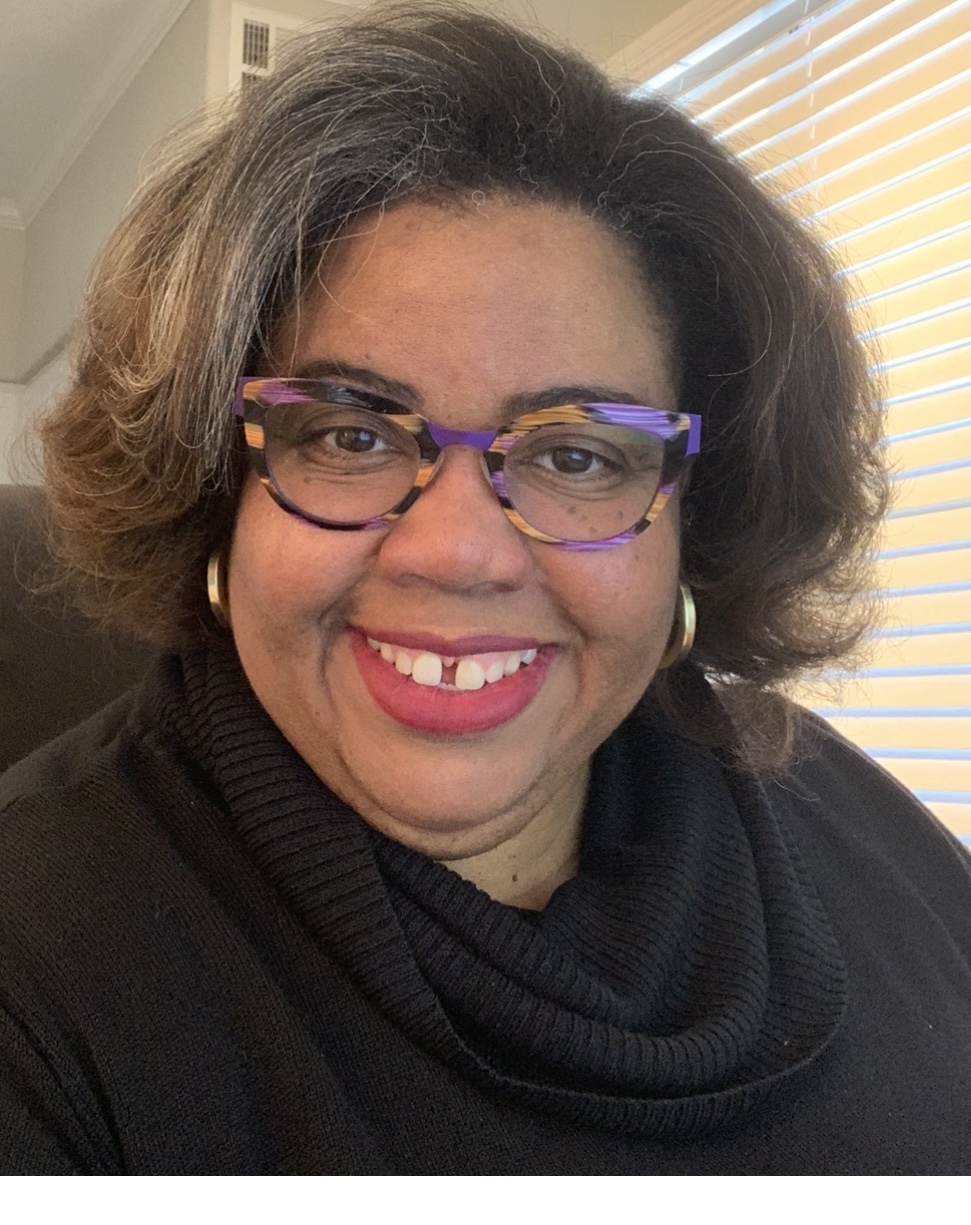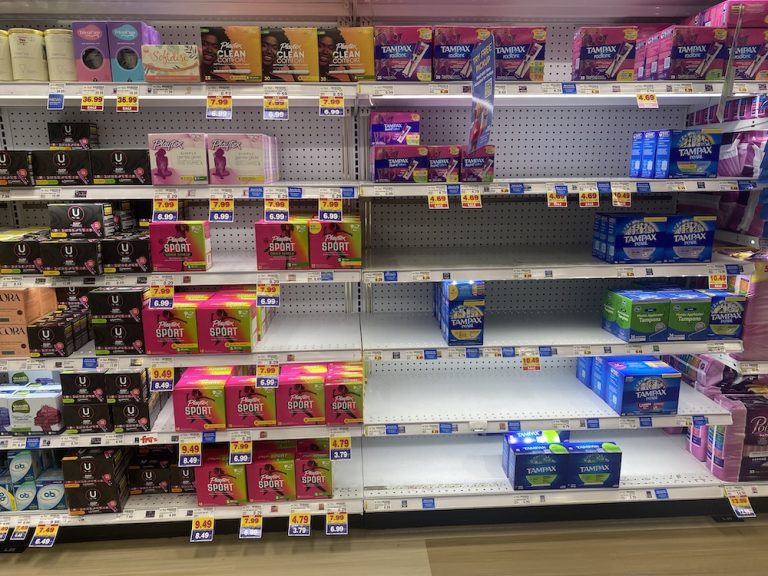While there’s been a lot of anguished coverage of the ongoing baby-formula shortage, parents with infants aren’t the only ones suffering from supply chain woes. Feminine hygiene products are the latest item to go missing from store shelves and manufacturers have not offered a definitive reason for the shortages.
The U.S. market for these essential products is dominated by just three firms – Procter & Gamble, Kimberly Clark Corporation, and Edgewell Personal Care – with P&G alone controlling 50% of the country’s tampon market and 25% of the global market. Representatives from all manufacturers have been questioned about the tampon shortage. Each, however, has given different responses.
A spokesperson from Kimberly Clark emailed a statement to the Today show that said the company: “has not actually experienced a product or supply shortage in the U.S.”
P&G’s Chief Financial Officer Andre Schulten told CNN: “Getting raw and packed materials to the places we need to get them to continues to be costly and highly volatile. We understand it is frustrating for our consumers when they can’t find what they need. We can assure you this is a temporary situation.”
Professor and supply chain management expert Hitendra Chaturvedi also believes the problem is temporary. However, he cites P&G’s inability to have a backup plan as the real cause of the problem.
“Kimberly Clark isn’t having a problem,” he said. “The problem is P&G. P&G controls 50% of the market. We’re all taking the same brush and painting the entire industry. I don’t buy it.”
Chaturvedi is doing what business journalists should do: asking the tough questions. He asked why aren’t companies like Kimberly Clark reporting shortages if the cause of the problem rests in raw materials? How is there a shortage of labor when most of the plants are automated?
Responding to empty retail shelves
Retailers like Target, CVS, and Walgreens have been adjusting to the shortages. A Target store in Phoenix, Arizona had large sections of its shelves empty. Each retailer was asked what they have been told by top manufacturers about the tampon shortages.
Walgreens Senior Director of External Relations Engerman Frasersai in an email that, “Walgreens works diligently with our suppliers to ensure we have supply available. However, similar to other retailers, we are experiencing some temporary brand-specific tampon shortages in certain geographies. While we will continue to have products at shelf and online, it may only be in specific brands while we navigate the supply disruption. For customers looking for a specific product or brand, our website is up-to-date with the latest available store-level inventory information.”
A CVS representative also responded by email saying, “Due to supplier challenges and increased customer demand, we’ve added a limit of two tampon products per purchase in our stores and online. We’re continuing to work with our tampon suppliers to address this issue and we regret any inconvenience this causes our customers.”
Various media outlets have offered different answers to Chaturvedi’s questions. Time Magazine, which originally broke the story about tampons in early June, called the shortage a “supply chain problem that no one’s talking about.” Bloomberg Magazine reported that the supply chain is under stress because raw materials are either harder to acquire or cost more money. The article said that cotton futures prices increased by 40% in the last year. Fluff pulp increased by 25% during the same time frame. Additional price increases are attributed to materials that come from oil like plastics and super-absorbents, which have increased as much as 70% due to the war between Russia and Ukraine. Neither P&G nor any other tampon manufacturer has cited specifics due to material increases or shortages.
Instead, one response on the reason for the tampon shortage from a P&G official has earned more criticism than the actual shortage itself. In July 2020, P&G launched a new ad campaign with the comedian Amy Schumer. P&G Spokeswoman Cheri McMaster said to Time magazine “retail sales growth has exploded” due to Schumer’s campaign. Schumer responded.
“Whoa I don’t even have a uterus,” Schumer captioned in an Instagram photo referring to the removal of her uterus in 2021.
It’s unclear how much money was earned as a result of Schumer’s campaign. P&G didn’t immediately respond to a request for an interview. According to P&G annual reports, the feminine care category grew between 5%-6% in 2020 and 2021. Net sales of feminine care products, which is included with baby and family care, was $18.36 billion in 2020. In 2019, net sales were $17.80 billion. The same category increased in 2021 to $18.85 billion.
In response, Chaturvedi said: “If P&G planned, wouldn’t they plan for the increase? You’re telling me (P&G) did not plan for a marketing campaign?”
Other issues surrounding the tampon shortage are inflation and a resemblance to the shortage of baby formula, which has yet to be resolved in the United States. Bloomberg cited that the increased costs for consumer goods are due in part to “corporate power.” The average cost of tampons is up 10%, while menstrual pads are 8% more expensive.
Baby formula plant similarities
The baby formula shortage has continued throughout the United States for months. Nearly 20% of the country’s baby formula is produced at the Sturgis, Michigan-based Abbott plant. The plant was originally investigated due to two infant deaths from a rare infection. The Food and Drug Administration found traces of a pathogen at the plant, according to The Atlantic. Several brands of formula were recalled and the plant ended up being closed for a period of time. The plant was also closed in mid-June due to thunderstorms in the area.
That plant’s various issues and closings coupled with parents stock-piling formula during Covid and the country’s strict trade policy on baby formula are the reasons behind the shortage.
“With the baby formula shortage, it was literally an oligopoly,” said Chaturvedi. “Abbott controls 40% of the market. Sixteen percent of that plant controls the country. It is an inflexible supply chain.”

In comparison, all of P&G’s tampons are made in a Maine factory, according to Time magazine. Edgewell Personal Care’s brands of Playtex and o.b. are made in a factory in Dover, Delaware.
Chaturvedi believes that the reasoning behind the shortage of tampons is not similar to the baby formula shortage. He said the issue with P&G begs the question, “Is it truly a supply chain problem, or is it just a P&G specific problem?”
He added that the manufacturing giant controls so much of the tampon market, the shortage is “manifesting itself as a pain across the entire country.”
The manifestation of the problem is being illustrated in stores and online. According to CNN, Instacart is now seeing an increase in shoppers stocking up on tampons. Searches for the product rose 13% on Instacart from June 12-18.
Twitter voices on the tampon shortage
While many on Twitter are asking about the reasons behind the shortages. Others are offering their opinions on the topic.
Twitter user Katherine B responded to Schumer’s post by saying, “I heard on Morning Joe that it’s your fault there’s a Tampon shortage. Any other company that wants to sell out their product should hire you.”
Twitter user @JeniLozauskas wanted to warn people.
She said, “The tampon shortage is no joke: three different stores had no OBs… had to order from ‘puts head down’ Amazon. What is going on?”











